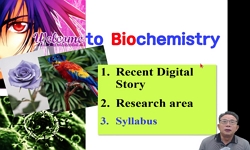The present study was performed to evaluate the effect of citric acid on the change of implant surface microstructure according to application time. Implants with pure titanium machined surface, titanium plasma-sprayed surface, and sand-blasted, large...
http://chineseinput.net/에서 pinyin(병음)방식으로 중국어를 변환할 수 있습니다.
변환된 중국어를 복사하여 사용하시면 됩니다.
- 中文 을 입력하시려면 zhongwen을 입력하시고 space를누르시면됩니다.
- 北京 을 입력하시려면 beijing을 입력하시고 space를 누르시면 됩니다.



구연산의 적용시간에 따른 임플란트 표면변화에 대한 주사전자현미경적 연구 = Scanning Electron Microscopic Study of the Effects of Citric Acid on the Change of Implant Surface According to Application Time
한글로보기https://www.riss.kr/link?id=A101527944
-
저자
송우석 (경희대학교 치과대학 치주과학교실) ; 권영혁 (경희대학교 치과대학 치주과학교실) ; 이만섭 (경희대학교 치과대학 치주과학교실) ; 박준봉 (경희대학교 치과대학 치주과학교실) ; 허익 ; Song, Woo-Seok ; Kwon, Young-Hyuk ; Lee, Man-Sup ; Park, Joon-Bong ; Herr, Yeek
- 발행기관
- 학술지명
- 권호사항
-
발행연도
2002
-
작성언어
Korean
- 주제어
-
등재정보
SCIE,SCOPUS,KCI등재
-
자료형태
학술저널
- 발행기관 URL
-
수록면
697-709(13쪽)
-
KCI 피인용횟수
2
- DOI식별코드
- 제공처
-
0
상세조회 -
0
다운로드
부가정보
다국어 초록 (Multilingual Abstract)
The present study was performed to evaluate the effect of citric acid on the change of implant surface microstructure according to application time. Implants with pure titanium machined surface, titanium plasma-sprayed surface, and sand-blasted, large grit, acid etched surface were utilized. Implant surface was rubbed with pH 1 citric acid for $\frac{1}{2}$ min., 1 min., 1 $\frac{1}{2}$ min., 2 min., and 3min, respeaively in the test group and implant surface was not treated in the control group. Then, the specimens were processed for scanning electron microscopic observation. The following results were obtained. 1. Both test and control group showed a few shallow grooves and ridges in pure titanium machined surface implants. There were not significant differences between two groups. 2. In titanium plasma-sprayed surfaces, round or amorphous particles were deposited irregularly. The irregularity of titanium plasma-sprayed surfaces conditioned with pH 1 citric acid was lessened and the cracks were increased relative to the application time of pH 1 citric acid. 3. Sand-blasted, large grit, acid etched surfaces showed the macro/micro double roughness. The application of pH 1 citric acid didn't change the characteristics of the sand-blasted, large grit, acid etched surfaces. In conclusion, the application of pH 1 citric acid to titanium plasma-sprayed surface is improper. And pure titanium machined surface implants and sand-blasted, large grit, acid etched surface implants can he treated with pH 1 citric acid for peri-implantitis treatment if the detoxification of these surfaces could be evaluated.
동일학술지(권/호) 다른 논문
-
- 대한치주과학회
- 권태연
- 2002
- SCIE,SCOPUS,KCI등재
-
치주인대 섬유아세포에서 Osteoprotegerin과 Osteoclast Differentiation Factor의 발현
- 대한치주과학회
- 류성훈
- 2002
- SCIE,SCOPUS,KCI등재
-
- 대한치주과학회
- 이호
- 2002
- SCIE,SCOPUS,KCI등재
-
치주질환으로 인해 유발된 하악의 만성 화농성 골수염의 치험 일례
- 대한치주과학회
- 임요한
- 2002
- SCIE,SCOPUS,KCI등재
분석정보
인용정보 인용지수 설명보기
학술지 이력
| 연월일 | 이력구분 | 이력상세 | 등재구분 |
|---|---|---|---|
| 2023 | 평가예정 | 해외DB학술지평가 신청대상 (해외등재 학술지 평가) | |
| 2020-01-01 | 평가 | 등재학술지 유지 (해외등재 학술지 평가) |  |
| 2012-03-21 | 학술지명변경 | 한글명 : The Journal of the Korean Academy of Periodontology (JPIS) -> Journal of Periodontal & Implant Science 외국어명 : THE JOURNAL OF KOREAN ACADEMY OF PERIODONTOLOGY -> Journal of Periodontal & Implant Science |  |
| 2011-03-22 | 학술지명변경 | 한글명 : 대한치주과학회지 -> The Journal of the Korean Academy of Periodontology (JPIS) |  |
| 2010-01-01 | 평가 | 등재학술지 유지 (등재유지) |  |
| 2008-01-01 | 평가 | 등재학술지 유지 (등재유지) |  |
| 2005-01-01 | 평가 | 등재학술지 선정 (등재후보2차) |  |
| 2004-01-01 | 평가 | 등재후보 1차 PASS (등재후보1차) |  |
| 2002-07-01 | 평가 | 등재후보학술지 선정 (신규평가) |  |
학술지 인용정보
| 기준연도 | WOS-KCI 통합IF(2년) | KCIF(2년) | KCIF(3년) |
|---|---|---|---|
| 2016 | 0.91 | 0.14 | 0.66 |
| KCIF(4년) | KCIF(5년) | 중심성지수(3년) | 즉시성지수 |
| 0.56 | 0.45 | 0.49 | 0.02 |




 ScienceON
ScienceON


